So I am doing a class on analog design. I have to design a two-stage Miller-compensated OTA. I would like to have some feedback about my design procedure and also some help because I am stuck. My professor doesn't give us much guidance, so I would like to get feedback from people doing analog design - if this is the way to go or if there are better techniques. I realize proficiency in design comes from experience, but since I lack it I don't know if I am doing this the correct way.
So again, my circuit is an two-stage Miller-compensated OTA:
The IBias is supposed to be an ideal current source that we are using in Cadence.
So in terms of specifications this is what I am given
- Supply voltage of 3.3 V.
- Small-signal voltage gain of 70 dB.
- Bandwidth of 10 kHz.
- Phase margin of 60 degrees.
- Load capacitance (Cout) of 1 pF.
- Slew-rate of 10 \$V/ \mu s\$
- Maximum current of the circuit should not exceed 300 \$ \mu A \$
So first, since I am using AMS 0.35 µm technology to avoid channel-length modulation effect I've fixed \$L= 1 \mu m \$ for all transistors. This way what I have to determine are: the 8 widths of all transistors, the feedback capacitor and biasing current.
The technology datasheet provides:
$$K_{PN} = \mu_n C_{ox} = 170 \mu A/V^2$$ $$K_{PP} = \mu_p C_{ox} = 58 \mu A/V^2$$
Ok, I've seen derived this relationship for the capacitances (which comes from the pole-zero relationship or something like that) which gives
$$C_f=0.22 C_{out} = 220 fF$$
Then I estimate the transconductance of the M1 transistor, which is equal to the one from transistor M2:
$$g_{m1}=2 \pi \times 10^{A_v/20} \times BW \times C_f = 43.7 \mu S$$ $$g_{m2}= 43.7 \mu S $$
Then I can calculate the current of transistor 7, which in turn gives the current of all 4 bottom transistors. We can also calculate the current on transistors 6, which is equal to the one on transistor 5. So only transistor 8 and therefore, the reference current, is missing.
$$ I_{D7} = SR \times C_f = 2.2 \mu A $$ $$ I_{D1} = I_{D2} = I_{D3} = I_{D4} = \frac{I_{D7}}{2}= 1.1 \mu A$$ $$ I_{D5} = I_{D6} = SR \times (C_f + C_{out}) = 12.2 \mu A $$
This information gives the width of transistors 1 and 2
$$W_1 = W_2 = \frac{L \times g_{m1}^2}{K_{PP} \times I_{D7}} = 15 \mu m$$
As well as the transconductance of transistor 5 and the width of this transistor
$$g_{m5}=2.2 \times \frac{C_{out}}{C_{f}} \times g_{m1} = 437 \mu S$$ $$W_5= \frac{L \times g_{m6}^2}{2*K_{NN} \times I_{D5}} = 46 \mu m$$
With this information we can get the widths of transistors M3 and M4 taking into account:
$$W_3 = \frac{I_{D3}}{I_{D5}}W_6=4.5 \mu m$$ $$W_4 = W_3 = 4.5 \mu m$$
And I am stuck here. I don't know how to progress and determine \$I_{bias} \$, and the width of transistors 6, 7 and 8.
How can I find the remaining four equations?
Also, some insight if my design is correct or how can I improve it, alternative ways, etc. My professor told me that starting by the capacitor might not be a good idea as that capacitor might be too small relatively to the parasitic capacitances of the MOS transistors. But every paper I saw used this approach.
Any bibliography that you can direct me too, if you don't want to spend time explaining step by step is much appreciated as well.
As my final steps I did this, but apparently my design is sadly not meeting the specifications. The overdrive voltage is defined as 0.2 V.
$$I_{bias}=I_{D5} = 2.2 \mu A $$ $$W_5=\frac{2 \times L \times I_{D5}}{V_{OV}^2 \times K_{PP}} = 1.9 \mu m$$ $$W_8=W_5 = 1.9 \mu m$$ $$W_7=\frac{W_5 \times W_6}{2 \times W_4} = 10.5 \mu m$$
And finally to add a compensation zero
$$R= \frac{1}{gm_6} = 2.3 k \Omega$$
New design procedure:
$$C_f>0.22 C_{out} = 220 fF \rightarrow C_f=3 pF$$
$$I_{D7}= SR \times C_f= 30 \mu A \rightarrow I_{D1}=I_{D2}=I_{D3}=I_{D4}=\frac{I_{D7}}{2}=\frac{I_{bias}}{2} = 15 \mu A $$
$$g_{m2}= g_{m1} = 2 \pi \times 10^{A_v/20} \times BW \times C_f = 596 \mu S$$
$$W_3 = \frac{L \times I_{D7}}{K_{NN} \times V_{OV}^2} = 4.41 \mu m \rightarrow W_4 = W_3 = 4.5 \mu m$$
$$W_1 = \frac{L \times g_{m1}^2}{K_{PP} \times I_{D7}} = 204.2 \mu m \rightarrow W_2 = W_1 = 205 \mu m$$
$$W_7 = \frac{L \times 2 \times I_{D7}}{K_{PP} \times V_{OV}^2} = 25.9 \mu m \rightarrow W_8 = W_7 = 26 \mu m$$
$$g_{m5}=2.2 \times \frac{C_{out}}{C_f}*g_{m1}=437 \mu S$$
$$g_{m4}=\sqrt{2*K_{NN}*\frac{W_4}{L}*I_{D4}}=151.5 \mu S$$
$$W_5 = W_4 \times \frac{gm_5}{gm_4} = 12.98 \mu m \rightarrow W_5 = 13 \mu m$$
$$I_{D6} = I_{D5}=\frac{g_{m5}^2}{2 \times {K_{NN}} \times \frac{W_5}{L}}= 13 \mu A$$
$$W_6 = W_7 \times \frac{I_{D6}}{I_{D7}} = 37.48 \mu m \rightarrow W_6 = 37.5 \mu m$$
Now my professor already instructed us to
(1) Place a resistor in series with the compensation capacitor
$$R_Z=\frac{1}{g_{m5}}=2.3 k \Omega$$
(2) Connect a switch on the testbench so it closes in the DC analysis and it allows correct DC bias. This switch seems to increase the gain a lot and reduce the bandwidth, but the professor said to put it either way, I really don't understand if I should or not.
Figure of the testbench:
Now let's check for the specifications, I am getting:
Gain = 90 dB, so it verifies the specification
Phase margin = 58.65 degrees → it is missing the specification
Bandwidth = 500 Hz → failing miserably
And I don't even know how to check for the slew rate.



